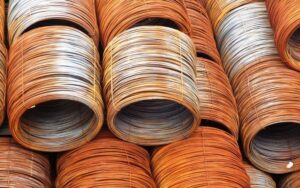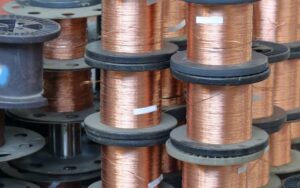Electromagnetic micro-coils are very tiny in size. This microcomponent helps to build interaction between a magnetic field and an electric current. The winding method involving electrically conductive wires helps to prepare a micro-coil. You can find micro-coils in different shapes, such as coil, spiral, rectangular, or helix. The different shapes are useful for different purposes. Therefore, when it comes to determining the shape and dimensions of the micro-coils, manufacturers consider several required parameters for a particular application area, such as resistance, inductance, and desired magnetic field strength. The production of tiny-sized micro-coils requires the use of magnifying glass or a microscope.
You will find the use of micro-coils in several devices, including sensors, inductors, electromagnets, and transformers. This is because electromagnetic micro-coils can build interaction between a magnetic field and an electric current and the above-mentioned devices work based on that interaction. This interaction can be developed through two different procedures, such as- a) when an electric current passes across a conductive wire, a magnetic field gets generated around the wire, and b) when the manufacturers provide an external magnetic field around the interior of the micro-coil, an electric current gets generated within the conductive wire.
Challenges Regarding the Size of the Micro-Coils:
In multiple medical invasive devices, electromagnetic micro-coils are important components. To fit the coils into those devices, manufacturers get a very tiny space. Therefore, they need to build miniaturized electromagnetic coils. Maintaining a small physical size of the coils is a great challenge for coil manufacturers and designers. On the other hand, the demand for microscopic components is rising in various application areas. Thus, the manufacturers require advanced micro-motion systems for controlling and positioning the micro-coils.
Manufacturing Challenges:
Manufacturers can not maintain the tiny size of the micro-coils without employing ultra-fine wires for the winding process. The approximate diameter of an ultra-fine wire is eight microns. Therefore, you can imagine how much thin ultra-fine wires are. Working with these ultra-fine wires is a very difficult task. When it comes to winding and connecting ultra-fine wires, you can depend on traditional methods and machinery due to various drawbacks. This is why manufacturers use custom-made machinery and methods for the coil manufacturing process.
Ultra-fine Wires Connectivity Method:
If you consider the traditional methods for joining metals and wires, you will find some effective methods, such as soldering and welding methods. However, these methods are only effective when the diameter of the wires is not too small. But in this case, the traditional methods display different limitations and drawbacks. First of all, you will not get durable and reliable joints from these methods. These heat-based methods can result in the complete destruction of the wires or oxidization at the joints. To get the most effective replacement for the traditional methods and resolve the issues, modern manufacturers depend on thermal compression bonding technology. Thermo-pressure bonding method can build joints between two similar ultra-fine wires as well as two different wires. You can use this method even if the wires consist of two different metals or have two very different diameters. This method helps you to build highly durable and reliable joints. You will not witness corrosion or strain at the joints. Therefore, as far as it is to build long-life devices, such as permanent medical implants, thermos-pressure bonding technology is the ultimate connectivity solution.
Ultra-fine Wires Winding Method:
The winding method of ultra-fine wires helps to build micro-coils. Through this method, manufacturers twist the tiny wires into a particular shape to produce coils. Custom-made winding machinery is essential for this winding process. When you are preparing micro-coils for medical applications, you must maintain the tolerance limits and high standards of the micro-coils.
Applications of Micro-Coils:
There are countless applications of micro-coils in different fields, such as-
- To build active implants, including pacemakers, pain management devices, and brain stimulation devices, micro-coils are necessary.
- In navigation and orientation sensors, electromagnetic micro-coils help to conduct several activities, such as targeted radiation catheters, implanted markers, targeted drug delivery, stent positioning, highly accurate ablations, endoscopic manipulation, etc.
- You will also find the use of micro-coils in therapeutic applications, such as electricity-based ablations and electrophysiology treatments.
- Micro-coils have also significant applications in diagnostics and orthopedic treatments.
Above all, the invention of micro-coils has significantly expanded the reach of medical science.




